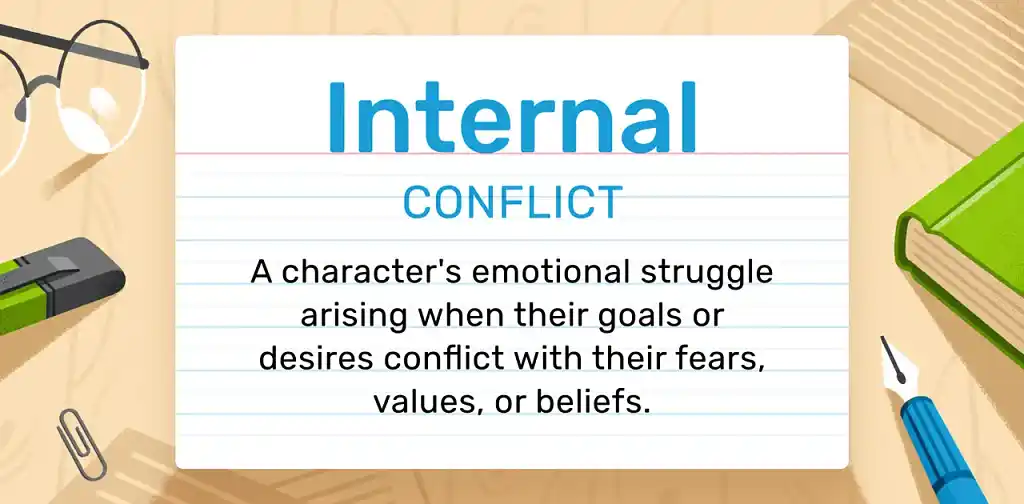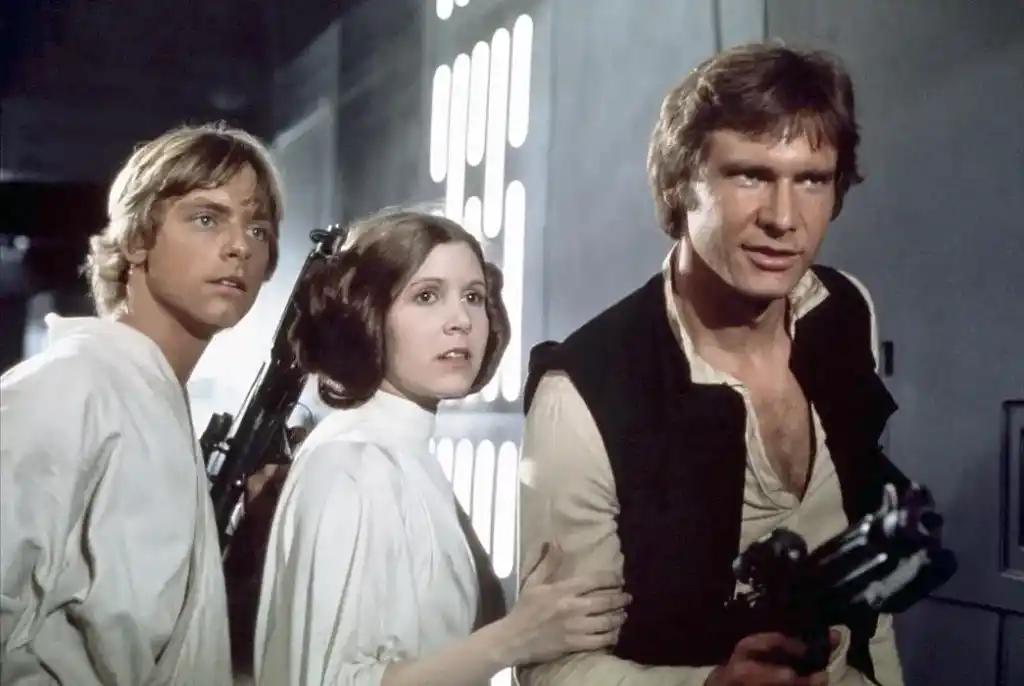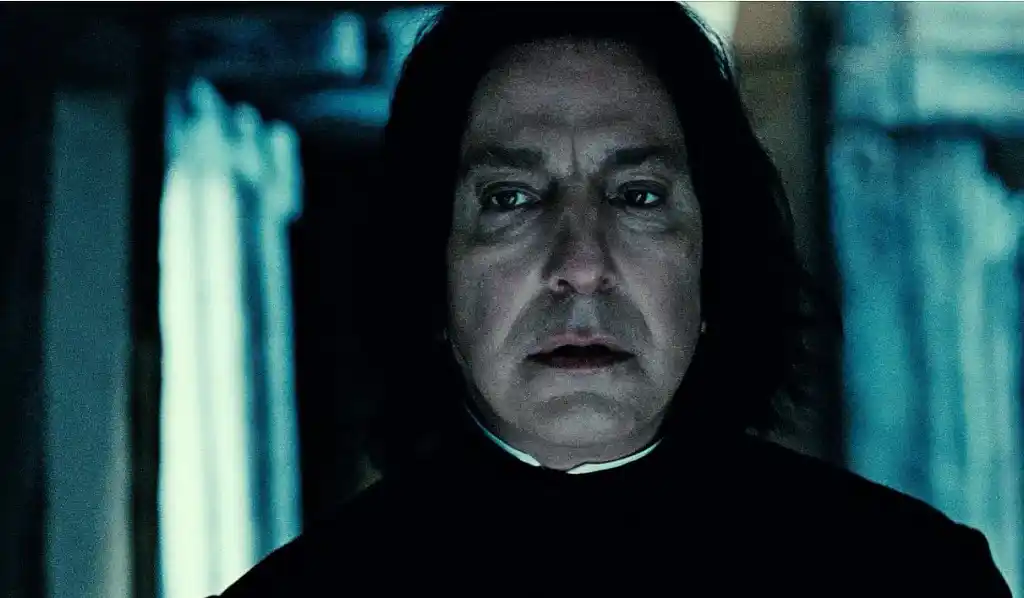Last updated on Oct 14, 2025
Internal Conflict Explained: Definition, Types, & Examples
Dario Villirilli
Editor-in-Chief of the Reedsy blog, Dario is a graduate of Mälardalen University. As a freelance writer, he has written for many esteemed outlets aimed at writers. A traveler at heart, he can be found roaming the world and working from his laptop.
View profile →Internal conflict, commonly called "Man vs. Self," describes a mental or emotional battle occurring within a character's psyche. This form of conflict centers on a character's inner thoughts, emotions, beliefs, or desires that compete or generate discord. It stands as the inverse of external conflict, which entails battles against outside forces.
Yet, just like external conflict, internal conflict helps readers connect with a character on a deeper level and raises the stakes in your story. In this post, we’ll dive into the concept of internal conflict, exploring its various types and sharing practical tips on how to weave it effectively into your writing.
What is internal conflict?
Internal conflict emerges when a character’s goals and desires clash with some personal value or beliefs. For instance, a character might want to trust a new lover but struggles to do so after being betrayed in the past. Or, in a fantasy setting, they might grapple with the decision to use forbidden magic to save their family from exile.

This battle often serves as the heart of a story 一 it raises the stakes and drives character development.
Internal conflict gives depth to the story
When we think of conflict, external ones often come to mind first — antagonists, forces of nature, or societal pressures that act as obstacles for the protagonist and drive stories forward. However, the most memorable tales also show how these challenges impact characters personally. Will an obstacle in their journey make them question their own ideals and morals? Will they reassess who they are and what motivates them?
Take Walter White from Breaking Bad, for example. After being diagnosed with cancer, he decides to cook meth to secure his family's financial future. But his criminal actions soon spiral out of control, forcing him to consider whether he should continue or call it quits.
This type of internal struggle pushes characters to make different choices and take various actions, ultimately shaping who they become, and allowing the author to explore what the human psyche is capable of when pushed — often to the extreme.
It drives character development
In his How to Write a Novel course, author Tom Bromley explains that good characters often have contradictory attributes within them, making them feel authentic and complex. For instance, Bromley points to the thriller novel My Sister, the Serial Killer, where Korede is torn between her loyalty to her sister Ayoola, who repeatedly commits murders, and her moral understanding that what Ayoola does is wrong. The way she deals with that tension as the story progresses determines how she changes as a person.

FREE COURSE
How to Write a Novel
Author and ghostwriter Tom Bromley will guide you from page 1 to the finish line.
Now, there are different types of internal conflicts, so let’s explore them.
5 types and examples of internal conflict
Internal conflict can take many forms, depending on the challenges a character is facing. For example, they might deal with a moral dilemma, a life-altering decision, or a struggle against personal fears or limiting beliefs. Let’s start with ethics.
Moral choice
A moral dilemma arises when a character faces a choice that challenges their ideas of right and wrong, but neither option is straightforward or free from painful consequences. This type of conflict often places personal values — like a sense of justice — at odds with other priorities, such as survival and personal gains or familial loyalty, forcing the character to navigate ethical gray areas. The possibility of guilt, shame, or regret can reveal hidden contradictions in the protagonist's beliefs and propel the plot in surprising ways.
Example: Jean Valjean in Les Misérables
Jean Valjean begins his journey as a hardened ex-convict who served nineteen years of hard labor for stealing a loaf of bread to feed his sister’s starving children. Upon his release, he’s marked by a yellow passport that brands him an outcast, unable to find honest work or lodgings. Though he’s consumed by resentment and despair, Valjean’s life takes a pivotal turn after a local bishop shows him unexpected kindness — an act of grace that compels him to break parole, assume a new identity, and devote himself to helping others.
But Valjean’s moral battle reaches a crisis point when authorities mistake an innocent man for the fugitive Jean Valjean. If he stays silent, the wrongly accused individual will be sent to prison in his stead; if he confesses his true identity, he risks losing the new life he has painstakingly built as a benevolent factory owner and mayor. Should he come clean for the sake of his own conscience and the innocently accused man, or should he continue to do good for the many, under a false identity? Are his deeds truly good, if they are built on a lie?
⚖️ Why it’s compelling: Valjean’s internal strife shows how redemption can hang on a single choice. By placing his sense of justice above his own safety, he grapples with what it truly means to be “good” in a harsh, unjust world.

Life decision
Another common setup for a character's inner struggle is placing them at a crossroads where their choice will significantly shape their future. This turning point often reflects an internal conflict, such as comfort versus ambition or personal desires versus duty, as the character wrestles with the fear of the unknown.
Example: Han Solo in Star Wars
Han Solo enters the Star Wars saga as a cynical, self-assured smuggler with a price on his head, willing to take any job that pays well enough to keep his beloved ship, the Millennium Falcon, flying. He spends much of his time dodging bounty hunters and fending off the Hutts’ enforcers, with only his Wookiee companion Chewbacca by his side. When Luke Skywalker and Obi-Wan Kenobi hire him for transport, Han initially treats the job like any other gig, scoffing at the idea of a grand rebellion or Jedi mysticism. His priorities are clear: survive, stay free, and earn enough credits to keep out of trouble.
That cynical outlook cracks when Han accepts his hefty reward for rescuing Princess Leia — only to walk away on the eve of the Rebellion’s crucial assault against the Death Star. Caught between taking his winnings and aligning with a cause he never intended to believe in, Han ultimately makes the life defining decision to return and help Luke.
🛰️ Why it’s compelling: The resolution of this inner conflict redefines Han not merely as a quick-witted pilot out for himself, but as a loyal friend and hero in the fight against the Empire. His choice, spurred on by conscience and camaraderie, puts him onto a path where self-interest tangles with genuine compassion — forever changing the course of his life.

Personal fear
Fear, as they say, is the mind killer — and for a character, it’s often the biggest obstacle to achieving their desires. Anxieties or phobias rooted in past trauma or self-doubt can serve as an “inner antagonist,” challenging the character’s resolve. Readers connect with characters who face their deepest fears, and whether they overcome them or fail to, they find enjoyment in the attempt.
Example: Elsa in Frozen
Elsa is the heir to the throne of Arendelle, born with the power to create and manipulate ice and snow. As a child, she accidentally injures her beloved younger sister, Anna, during a playful nighttime romp in the palace. Traumatized and taught to “conceal, don’t feel” by her worried parents, Elsa grows up terrified of hurting others and fearful that she might be seen as a monster. This deep-seated anxiety compels her to distance herself from everyone, especially Anna, intensifying the emotional rift between them.
When Elsa’s hidden abilities are revealed at her coronation, she panics and accidentally plunges the kingdom into an eternal winter. Horrified by the chaos she’s unleashed, Elsa flees to a secluded mountain, desperate to escape the judgment of those she fears will hate her for her powers.
❄️ Why it’s compelling: Elsa’s journey becomes a fight against her own shame and self-doubt. She needs to learn that true danger lies not in her magic, but in her belief that she must hide who she is. Only by embracing her capabilities with love and confidence does Elsa break free of the icy prison forged by her own fears, and is thus able to build a better world for herself and those around her.

Limiting belief
Similarly to fear, a limiting belief is a conviction that convinces your character they are unworthy or incapable of achieving their goals, often stemming from rough upbringings, cultural pressures, or past failures. These doubts can lead to missed opportunities and self-sabotage, but surmounting them can be one of the most uplifting and relatable journeys for readers, who may or may not see themselves in the character.
Example: Nina in Black Swan
Raised by an overprotective mother who projects her own thwarted ambitions onto her, Nina is a perfectionist ballerina at a prestigious New York City ballet company. When she lands the dual role of the gentle White Swan and the untamed Black Swan in Swan Lake, her obsessive quest for flawlessness — and inability to embrace her darker, wilder side — triggers a psychological battle within her own mind.
The more she becomes consumed by the need to be perfect, the more she fails to control her darker impulses and spirals into paranoia, self-harm, and hallucinations. After pushing herself to the extreme, she finally gives in to her dark side, pulling off a powerful performance, where both her greatest triumph and tragedy unfold on the very same stage.
🩰 Why it’s compelling: Nina’s story is a quintessential example of man vs. self. Her narrow self-perception and fixation on purity conflict with her ability to reach her full potential as a ballerina. To succeed, she must confront and overcome her inner barriers — ultimately learning to get out of her own way.

Contradictory attributes
Finally, contradictory attributes emerge when a character embodies opposing traits or desires, creating tension and complexity in their internal landscape. These contradictions help humanize your protagonist, as real people can be both compassionate and ruthless, brave and fearful. The push-and-pull between these attributes can spark intense inner turmoil, leading to dramatic plot turns and transformation.
Example: Severus Snape in the Harry Potter series
“You're just like your father. Lazy, arrogant…”
In the Harry Potter saga, Severus Snape is introduced as the stern and enigmatic Potions Master at Hogwarts, infamous for his scathing remarks and apparent bias toward Harry Potter. This hostility stems from Harry’s resemblance to his father, James Potter, whom Snape deeply resents for bullying him during their school years and for winning the heart of Lily, the woman he deeply loved. To the outside world, Snape appears to be a loyal member of the Death Eaters, working for Lord Voldemort. However, his true allegiance is far more complex.
Central to his internal tug-of-war is his undying love for Lily, Harry’s mother, whose rejection and eventual death haunt him. After inadvertently relaying the prophecy that set Voldemort on the path to kill Lily, Snape dedicates himself to a near-impossible penance: protect Harry at all costs.
🐍 Why it’s compelling: It’s precisely this clash between cruelty and devotion that makes Snape so fascinating. Though he savagely belittles Harry in class, he repeatedly risks his life as a double agent, deceiving the Dark Lord to uphold Dumbledore’s plan and safeguard Lily’s son. By blending cruelty with compassion, Snape underscores how contradictory attributes can shape the most unforgettable characters in literature (while also driving the narrative forward).

Let’s now look at some tips to integrate these inner turmoils into your writing.
3 tips to write internal conflict
1. Blend internal and external conflicts
Blending internal and external conflicts is a powerful way to add layers to your story. A great example of this is Rocky. On the surface, it’s a classic underdog tale about a boxer taking on the world champion. But what makes it truly compelling is the underlying story about self-worth.
Rocky’s external conflict is the physical challenge of training for the fight, but his internal struggle runs deeper. He’s not just fighting for prize money — he’s battling for his own sense of identity and value. His doubts and fears about failure create moments of vulnerability that mirror his grueling physical journey. This connection between the internal and external stakes makes his triumph resonate on a personal level, elevating the story far beyond a simple sports drama.
2. Give your character a flaw that they struggle with
The most memorable characters in literature are often defined by their flaws. Nobody is perfect — least of all your protagonist — and it’s these imperfections that drive their decisions, often leading to consequences that spiral into new conflicts.
Take Ged from Ursula K. Le Guin’s A Wizard of Earthsea. His journey to becoming a great wizard is repeatedly hindered by his pride. When a peer challenges him, Ged’s hubris compels him to attempt a dangerous resurrection spell, which backfires spectacularly. Instead of success, he unleashes a shadowy creature that kills another wizard and haunts Ged throughout the story. This flaw shapes the plot and raises the stakes as Ged struggles to either prove himself or undo the damage he caused. His internal conflict, caught between his arrogance and his growing fear, adds depth to his character and tension to the narrative.

FREE COURSE
How to Develop Characters
In 10 days, learn to develop complex characters readers will love.
3. Give your characters relatable internal conflicts
Internal conflicts are universal, and leveraging them can make your story more relatable — especially when writing speculative fiction.
Terry Pratchett demonstrates this brilliantly in his Discworld series, set in a wildly imaginative fantasy world. In Guards! Guards!, Captain Samuel Vimes of the underfunded Ankh-Morpork City Watch faces the monumental task of preventing a dragon from destroying the city and overthrowing its government. But that’s only part of the narrative. Along the way, Vimes grapples with his sense of duty, his cynical outlook, and the ideals he held in his youth. These internal struggles ground the story, creating a relatable emotional core for readers navigating an otherwise unfamiliar world.
That wraps up our guide on the inner battles waged in the hearts and minds of your favorite characters. With these tips and examples, you should now have a solid grasp of internal conflict and how to incorporate it into your stories. Next, explore external conflict to discover how combining it with internal struggles can create a richer, more dynamic narrative that keeps readers hooked.








